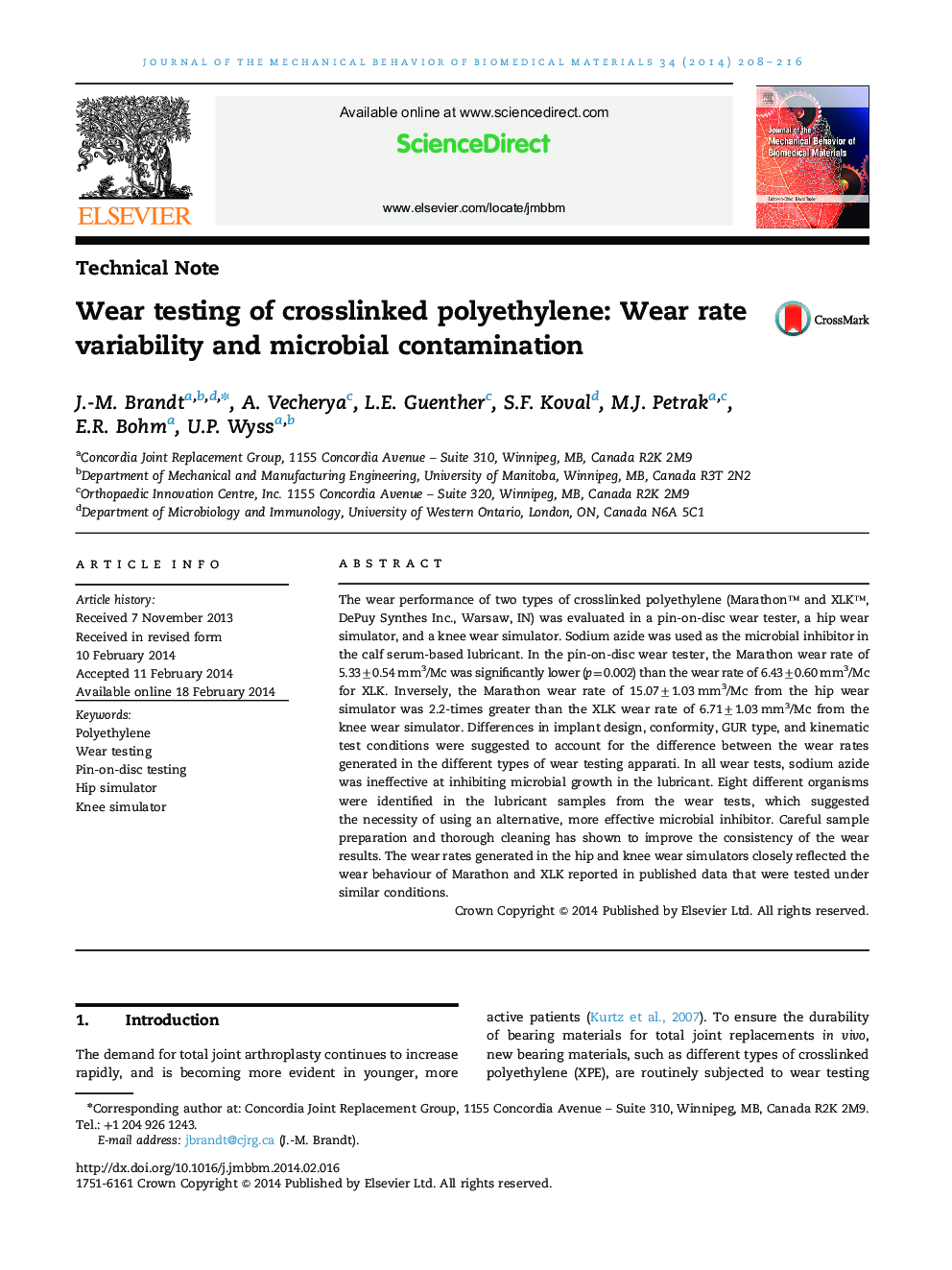| Article ID | Journal | Published Year | Pages | File Type |
|---|---|---|---|---|
| 810767 | Journal of the Mechanical Behavior of Biomedical Materials | 2014 | 9 Pages |
The wear performance of two types of crosslinked polyethylene (Marathon™ and XLK™, DePuy Synthes Inc., Warsaw, IN) was evaluated in a pin-on-disc wear tester, a hip wear simulator, and a knee wear simulator. Sodium azide was used as the microbial inhibitor in the calf serum-based lubricant. In the pin-on-disc wear tester, the Marathon wear rate of 5.33±0.54 mm3/Mc was significantly lower (p=0.002) than the wear rate of 6.43±0.60 mm3/Mc for XLK. Inversely, the Marathon wear rate of 15.07±1.03 mm3/Mc from the hip wear simulator was 2.2-times greater than the XLK wear rate of 6.71±1.03 mm3/Mc from the knee wear simulator. Differences in implant design, conformity, GUR type, and kinematic test conditions were suggested to account for the difference between the wear rates generated in the different types of wear testing apparati. In all wear tests, sodium azide was ineffective at inhibiting microbial growth in the lubricant. Eight different organisms were identified in the lubricant samples from the wear tests, which suggested the necessity of using an alternative, more effective microbial inhibitor. Careful sample preparation and thorough cleaning has shown to improve the consistency of the wear results. The wear rates generated in the hip and knee wear simulators closely reflected the wear behaviour of Marathon and XLK reported in published data that were tested under similar conditions.
